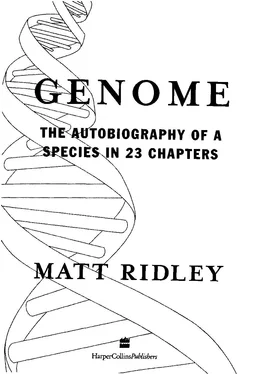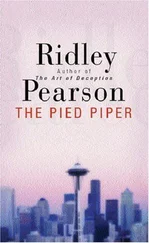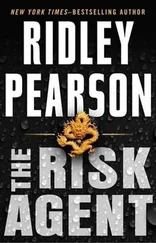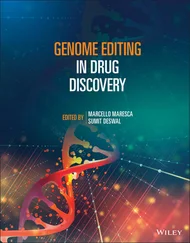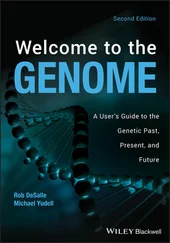Genome - Matt Ridley
Здесь есть возможность читать онлайн «Genome - Matt Ridley» весь текст электронной книги совершенно бесплатно (целиком полную версию без сокращений). В некоторых случаях можно слушать аудио, скачать через торрент в формате fb2 и присутствует краткое содержание. Жанр: Старинная литература, на английском языке. Описание произведения, (предисловие) а так же отзывы посетителей доступны на портале библиотеки ЛибКат.
- Название:Matt Ridley
- Автор:
- Жанр:
- Год:неизвестен
- ISBN:нет данных
- Рейтинг книги:5 / 5. Голосов: 1
-
Избранное:Добавить в избранное
- Отзывы:
-
Ваша оценка:
- 100
- 1
- 2
- 3
- 4
- 5
Matt Ridley: краткое содержание, описание и аннотация
Предлагаем к чтению аннотацию, описание, краткое содержание или предисловие (зависит от того, что написал сам автор книги «Matt Ridley»). Если вы не нашли необходимую информацию о книге — напишите в комментариях, мы постараемся отыскать её.
Matt Ridley — читать онлайн бесплатно полную книгу (весь текст) целиком
Ниже представлен текст книги, разбитый по страницам. Система сохранения места последней прочитанной страницы, позволяет с удобством читать онлайн бесплатно книгу «Matt Ridley», без необходимости каждый раз заново искать на чём Вы остановились. Поставьте закладку, и сможете в любой момент перейти на страницу, на которой закончили чтение.
Интервал:
Закладка:
Here is an example of a repetition of a minisatellite: hxckswapmeaboutlopl-hxckswapmeaboutlopl-hxckswapmeaboutlopl-hxckswapmeaboutlopl-
hxckswapmeaboutlopl-hxckswapmeaboutiopl-
hxckswapmeaboutlopl-hxckswapmeaboutlopl-
hxckswapmeaboutlopl-hxckswapmeaboutlopl. Ten repeats in this case. Elsewhere, at each of one thousand locations, there might be fifty or five repeats of the same phrase. Following instructions, the cell starts swapping the phrases with the equivalent series on the other copy of the same chromosome. But in doing so it makes fairly frequent mistakes, adding or subtracting to the number of repeats.
In this way each series of repeats gradually changes length, fast enough so that it is different in every individual, but slowly enough so that people mostly have the same repeat lengths as their parents.
Since there are thousands of series, the result is a unique set of numbers for each individual.
1 3 2 G E N O M E
Alec Jeffreys and his technician Vicky Wilson stumbled on minisatellites in 1984, largely by accident. They were studying how genes evolve by comparing the human gene for the muscle protein myoglobin with its equivalent from seals when they noticed a stretch of repetitious D N A in the middle of the gene. Because each minisatellite shares the same core sequence of twelve letters, but because the number of repeats can vary so much, it is a relatively simple matter to fish out this minisatellite array and compare the size of the array in different individuals. It turns out that the repeat number is so variable that everybody has a unique genetic fingerprint: a string of black marks looking just like a bar code. Jeffreys immediately spotted the significance of what he had found. Neglecting the myoglobin genes that were the target of his study, he started investigating what could be done with unique genetic fingerprints. Because strangers have such different genetic fingerprints, immigration authorities were immediately interested in testing the claims of would-be immigrants that they were close relatives of people already in the country.
Genetic fingerprinting proved that they were generally telling the truth, which eased much misery. But a more dramatic use was to follow soon after.7
On 2 August 1986, a young schoolgirl's body was found in a thorn thicket close to the village of Narborough, in Leicestershire.
Dawn Ashworth, aged fifteen, had been raped and strangled. A week later, the/police arrested a young hospital porter, Richard Buckland, who confessed to the murder. There the matter would have rested.
Buckland would have gone to prison, convicted of the killing. However, the police were anxious to clear up an unsolved case, of a girl named Lynda Mann, also fifteen, also from Narborough, also raped, strangled and left in an open field, but nearly three years before.
The murders were so similar it seemed implausible that they had not been committed by the same man. But Buckland refused to confess to Mann's murder.
Word of Alec Jeffreys's fingerprinting breakthrough had reached the police via the newspapers, and since he worked in Leicester, less than ten miles from Narborough, the local police contacted S E L F - I N T E R E S T 1 3 3
Jeffreys and asked him if he could confirm the guilt of Buckland in the Mann case. He agreed to try. The police supplied him with semen taken from both girls' bodies and a sample of Buckland's blood.
Jeffreys had little difficulty finding various minisatellites in each sample. After more than a week's work the genetic fingerprints were ready. The two semen samples were identical and must have come from the same man. Case closed. But what Jeffreys saw next astonished him. The blood sample had a radically different fingerprint from the semen samples: Buckland was not the murderer.
The Leicestershire police protested heatedly that this was an absurd conclusion and that Jeffreys must have got it wrong. Jeffreys repeated the test and so did the Home Office forensic laboratory, with exactly the same result. Reluctantly, the baffled police withdrew the case against Buckland. For the first time in history a man was exonerated on the basis of his D N A sequences.
But nagging doubts remained. Buckland had, after all, confessed and policemen would find genetic fingerprinting a lot more convincing if it could convict the guilty as well as acquit the innocent. So, five months after Ashworth's death, the police set out to test the blood of 5,500 men in the Narborough area to look for a genetic fingerprint that matched that of the murdering rapist's sperm. No sample matched.
Then a man who worked in a Leicester bakery named Ian Kelly happened to remark to his colleagues that he had taken the blood test even though he lived nowhere near Narborough. He had been asked to do so by another worker in the bakery, Colin Pitchfork, who did live in Narborough. Pitchfork claimed to Kelly that the police were trying to frame him. One of Kelly's colleagues repeated the tale to the police, who arrested Pitchfork. Pitchfork quickly confessed to killing both girls, but this time the confession proved true: the D N A fingerprint of his blood matched that of the semen found on both bodies. He was sentenced on 23 January 1988 to life in prison.
Genetic fingerprinting immediately became one of forensic 1 3 4 G E N O M E
science's most reliable and potent weapons. The Pitchfork case, an extraordinary virtuoso demonstration of the technique, set the tone for years to come: genetic fingerprinting's ability to acquit the innocent, even in the face of what might seem overwhelming evidence of guilt; its ability to flush out the guilty just by the threat of its use; its amazing precision and reliability — if properly used; its reliance on small samples of bodily tissue, even nasal mucus, spit, hair or bone from a long-dead corpse.
Genetic fingerprinting has come a long way in the decade since the Pitchfork case. In Britain alone, by mid-1998 320,000 samples of D N A had been collected by the Forensic Science Service and used to link 28,000 people to crime scenes. Nearly twice as many samples have been used to exonerate innocent people. The technique has been simplified, so that single sites of minisatellites can be used instead of many. Genetic fingerprinting has also been amplified, so that tiny minisatellites or even microsatellites can be used to give unique 'bar codes'. Not only the lengths but the actual sequences of the minisatellite repeats can be analysed to give greater sophistication. Such D N A typing has also been misused or discredited in court, as one might expect when lawyers are involved. (Much of the misuse reflects public naivety with statistics, rather than anything to do with the D N A : nearly four times as many potential jurors will convict if told that a D N A match has a chance probability of 0.1 per cent than if told one in a thousand men match the D N A
- yet they are the same facts.8)
D N A fingerprinting has revolutionised not just forensic science but all sorts of other fields as well. It was used to confirm the identity of the exhumed corpse of Josef Mengele in 1990. It was used to confirm the presidential parenthood of the semen on Monica Lewinsky's dress. It was used to identify the illegitimate descendants of Thomas Jefferson. It has so blossomed in the field of paternity testing, both by officials publicly and by parents privately, that in 1998 a company called Identigene placed billboards by freeways all over America reading: ' W H O ' S T H E F A T H E R ? C A L L
1-800-DNA-TYPE'. They received 300 calls a day asking for their S E L F - I N T E R E S T 1 3 5
$600 tests, both from single mothers trying to demand child-support from the 'fathers' of their children and from suspicious 'fathers'
unsure if their partner's children were all theirs. In more than two-thirds of cases the D N A evidence showed that the mother was telling the truth. It is a moot point whether the offence caused to some fathers by discovering that their partners were unfaithful outweighs the reassurance others receive that their suspicions were unfounded. Britain, predictably, had a fierce media row when the first such private service set up shop: in Britain such medical technologies are supposed to remain the property of the state, not the individual.9
Читать дальшеИнтервал:
Закладка:
Похожие книги на «Matt Ridley»
Представляем Вашему вниманию похожие книги на «Matt Ridley» списком для выбора. Мы отобрали схожую по названию и смыслу литературу в надежде предоставить читателям больше вариантов отыскать новые, интересные, ещё непрочитанные произведения.
Обсуждение, отзывы о книге «Matt Ridley» и просто собственные мнения читателей. Оставьте ваши комментарии, напишите, что Вы думаете о произведении, его смысле или главных героях. Укажите что конкретно понравилось, а что нет, и почему Вы так считаете.
